The international development sector is reeling from the shockwaves following the announcement made after the inauguration of Donald Trump, the 47th president of the United States of America. The 90-day foreign aid freeze ordered on his first day in office, followed by stop-work orders for all USAID activities, combined with public criticism of the agency, as well as its unclear fate, the withdrawal from the World Health Organization and the UN Human Rights Council are a clear signal of the United States administration’s move to diminish its foreign assistance. In this context and as a result of this change in the biggest donor’s behaviour, governments, philanthropists, global health and development organizations, and individual professionals are discussing who can and will replace the U.S. in the international aid landscape and whether there is even another option available. Check out DevelopmentAid member-experts’ opinions on this topic and share your thoughts and your point of view on the issue.
Key Takeaways:
- According to the Organization for Economic Co-operation and Development, the U.S. accounted for US$64 billion, or nearly 28% of the US$223 billion in Official Development Assistance in 2023.
- According to experts, while EU countries deal with other economic priorities, China could increase its UN contributions.
- Some experts consider that instead of seeking a direct replacement for U.S. aid, the development sector must leverage AI and innovative financing models to build more resilient, self-sustaining development strategies.
- Experts note that Gulf countries are an underexplored source of foreign aid, given that these countries are rich and their economies are thriving.
- The future of sustainable development funding requires a multi-sector approach, combining philanthropy, corporate social responsibility, impact investing, and local funding models.
DevelopmentAid: If the U.S. leaves the international aid landscape, who is going to take its place? Can other donors compensate for the U.S. aid cuts?
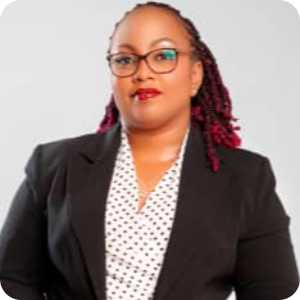
“The U.S. cutting foreign aid isn’t just a political move – it’s a wake-up call. For years, global justice efforts in Uganda, Kenya, and the DRC have relied on these funds to fight corruption, provide legal aid, and support communities in crisis. Now, with that money drying up, the question is no longer just about who will replace the U.S., but how the future of aid must evolve to survive. It is time to adopt new-age solutions as traditional government aid fades. It’s time to think about decentralized funding powered by blockchain, ensuring donations actually reach the people who need them. Crowdfunding platforms like GoFundMe and Patreon aren’t just for influencers – they can sustain grassroots legal aid. Even Decentralized Autonomous Organizations (DAOs) could play a role, allowing communities to fund and vote on justice initiatives transparently. Social media activism isn’t just about hashtags – it’s about mobilizing real financial support. TikTok creators and digital philanthropists are proving that millions can be raised overnight for causes that matter. Imagine channeling that energy into sustaining legal aid programs and anti-corruption efforts. The old model is fading. The future of global justice is digital, decentralized, and directly in our hands. Who’s ready to build it?”

“The shift in the international aid landscape is not just about the U.S. withdrawing – it’s about a fundamental transformation in how aid is structured and delivered. While USAID has injected over US$1 billion into Lebanon over the past decade, its impact remains difficult to trace in tangible, systemic change. This raises an uncomfortable but necessary question: Was aid truly working, or was it time for a reassessment? At the same time, AI is emerging as a disruptive force in development, forcing organizations to reinvent themselves and their value propositions to remain relevant. Whether it’s optimizing supply chains, enhancing data-driven decision-making, or reducing dependency on traditional aid flows, AI is pushing the sector into uncharted territory. This transition is painful in the short term but necessary in the long run. Rather than seeking a direct replacement for U.S. aid, the sector must leverage AI and innovative financing models to build more resilient, self-sustaining development strategies because the future of aid isn’t about finding new donors, but finding new ways to deliver impact.”
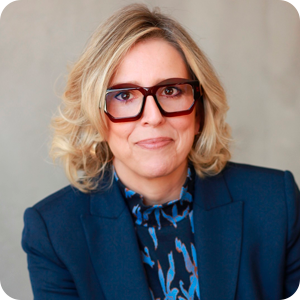
“As institutional donors like the U.S. government and others scale back foreign aid, in order to ensure sustainability, diversifying funding sources is essential. Private philanthropy has stepped in to fill financial gaps, offering flexibility and speed, but it cannot fully replace large-scale institutional aid. The future of sustainable development funding requires a multi-sector approach, combining philanthropy, corporate social responsibility, impact investing, and local funding models. Collaboration among funders is critical. Partnerships between institutional donors, philanthropists, corporations, and local organizations can create coordinated funding strategies, including pooled funds and joint grant-making. Collaborative philanthropy and collective decision-making funding processes are becoming essential mechanisms for ensuring that resources are allocated efficiently and equitably. By engaging multiple stakeholders in funding decisions, these approaches can foster greater transparency, shared accountability, and alignment with local priorities. Participatory grant-making, where affected communities have a voice in funding allocations, ensures that investments are need-driven rather than donor-driven. Prioritizing the localization agenda – empowering local actors in decision-making and funding – will ensure long-term, context-specific solutions. Additionally, collaborative funding models, such as giving circles and multi-donor funds, help streamline processes, reduce duplication, and maximize impact. Collaborative philanthropy serves both donors and recipients; reducing bureaucracy and paperwork will allow organizations on the ground to focus on measuring and tracking the desired impact, expedite decision-making and iteration, replicate and scale-up initiatives for greater and higher impact. Philanthropy must evolve beyond gap-filling and drive funding innovation. A collaborative, diversified funding model is essential to create a sustainable and resilient global development ecosystem.”

“Philanthropic aid increases. Philanthropic aid is somewhat similar to government development aid and forms a significant proportion of total aid. In particular, annual U.S. philanthropic contributions, in the last few years, have been a similar amount to U.S. government development aid. Given the current extreme situation with USAID, a case should be made to philanthropic organizations to release some capital reserves. To make this more compelling, these releases could be in the form of patient equity or concessional loans.
Better targeted development aid and efficiencies. The development aid sector needs to better demonstrate impact and efficiency. More development aid should be directed to specifically target removing the barriers to the development of essential service projects, and in doing so crowding in blended financing. Investing in development in this targeted way makes a compelling case.
Don’t call it Aid. Development partners need to do a better job selling the virtues of development investment. It’s not just the “soft power” angle, in reality it’s more direct than that and just makes economic and commercial sense. Development funding that enhances the economic communities in an emerging economy makes more people want to stay and thrive where they are. The development cost of contributing to this economic development is a fraction of the per person cost of dealing with the alternatives including unwanted migration and radicalization.”
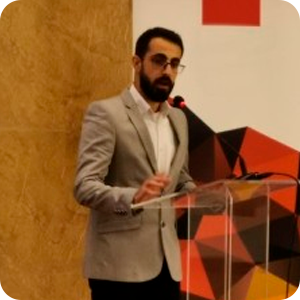
“When considering the shortfall in international development funds that the United States’ withdrawal would cause, it is important to consider several factors. Firstly, the volume of U.S. aid funding; secondly, the state of the global economy, thirdly, the frameworks that govern the distribution of aid, and finally, the elephant in the room – China. The United States was the largest bilateral donor in the world in FY 2023, contributing over US$60 billion in development funds, namely through the United States Agency for International Development, or USAID. The U.S. also contributed over US$25 billion in United Nations funding. This detail will prove important shortly. Taking into account the fact that the second largest bilateral donor over FY23 was Germany, with about US$38 billion, followed very closely by the European Commission through ECHO, it seems unlikely that Europe will step up to the plate to make up for the shortfall. Germany is in the grips of a post-COVID recession, and the incoming cabinet of Friedrich Merz is prioritizing spending on defense and infrastructure. These conditions conspire to rule out Germany increasing its spending on international development. Similarly, the European Commission is dealing with a slow-moving debt crisis that is developing in its second largest economy, France, and increasing security challenges resulting from the Trump administration’s approach to Europe’s defense. Thus, the EU or European nations cannot cover the deficit in this case. What applies to Europe applies to Japan on many levels. Historically a major UN donor and a weighty actor in development, Japan is also dealing with an economic recession, which makes an increase in development funds unlikely. Similarly, even if Japan scales up its commitment, it is inconceivable that it can fill the gap left by the U.S. withdrawal. Gulf countries, members of the Gulf Cooperation Council (GCC) – Bahrain, Kuwait, Oman, Qatar, Saudi Arabia, and the United Arab Emirates – could be of interest in this case, given that none of the GCC countries are suffering from a recession and that their economies remain vibrant and in overall good health. Nevertheless, a substantive scale up of development funds emanating from the GCC is highly unlikely. GCC countries approach overseas investment with an eye for investment as opposed to development. Nevertheless, and while the approach should be considered more closely by development actors, closer engagement with GCC governments and better-coordinated advocacy efforts, focused on messaging that resonates rather than development platitudes, will likely yield higher investment in development from the GCC. However, should that pan out, GCC investment will take at least five years to reach a point where it can start offsetting the U.S. withdrawal and the EU’s stall. The situation with China is of more interest. While China has not adopted the contracting and outsourcing model of major Western donors, it remains the second largest contributor to UN funding. While China is dealing with a slowing economy, it still puts considerable emphasis on soft power, and could be brought to increase its UN contributions, which would subsequently allow for increased UN funding for development, thus mildly, albeit very mildly, offsetting the U.S. hypothetical withdrawal. The above puts the burden on international donors to step up their funding efforts to make up for the loss of American funds, and does not take into account the role and responsibilities of downstream actors (namely non-profits) in more efficiently using resources, reducing wasteful spending on overheads, reconsidering market-deforming salary scales, and repackaging development as true market-driven impact investment rather than “handouts”.”
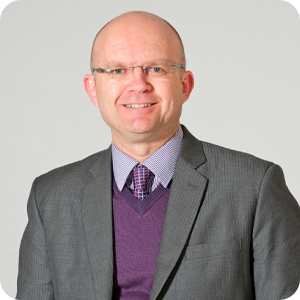
“The availability and use of quality, affordable medicines are critical for universal health coverage, whether it is anti-malaria medication for children and pregnant mothers, medicines to treat multi-resistant TB or to keep HIV patients stabilized. One-third of the world’s population doesn’t have access to lifesaving meds and that should prompt us to action. The recent sudden reduction in aid from bilateral donors is affecting the lives of many of the most poor and vulnerable with patients dying and the wider global community being at a greater risk of significant health events as a result of these reductions. The health and prosperity of those communities has been diminished and from a simply human perspective, we should be helping where we can. There has been criticism of international development paradigms and this seismic shake up of international aid provides immediate opportunities for local actors to take greater leadership in regard to allocation and the efficient use of local resources, and the application of technologies to improve efficiencies in supply chain and pharmacy systems, developing and improving the availability and use of medicines through a local prioritized lens. The challenge is how existing international expertise can pivot to provide the support that country-based professionals and local organizations have been getting but now need for them to continue with the transformational changes needed? How can funders and the private sector do more to facilitate this? Management Sciences for Health (MSH) is creatively looking at how to leverage its 50 years of experience to be part of the solution. Funds that have been removed from global health will not return soon, so how can we do things differently? If we don’t act now then more women, children, and the most vulnerable in our global village will die.”
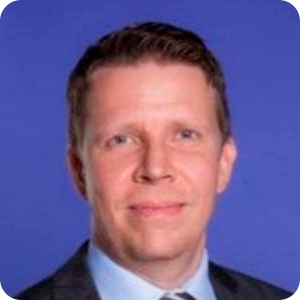
“The U.S. has long been a significant player in the international aid landscape, providing substantial financial support to various global health, education, and development programs. If the U.S. disappears from this landscape, other major donors like the European Union, China, and private foundations might step in to fill the gap. The European Union has a history of providing substantial aid to developing countries and has the potential to increase its contributions. China, with its growing influence in global affairs, has also been increasing its foreign aid in recent years. Private foundations, like the Bill & Melinda Gates Foundation, have been playing a crucial role in global health and development and could potentially increase their contributions to mitigate the impact of U.S. aid cuts. However, compensating for the U.S. aid cuts would be challenging due to the sheer scale of American contributions. While other donors can increase their aid, the coordination and efficiency of aid distribution will be crucial to ensure that the most vulnerable populations do not suffer. Collaborative efforts among governments, international organizations, and private foundations will be essential to address the funding gap and ensure that aid reaches those who need it the most. Innovative financing mechanisms will also be crucial to mitigate the impact of reduced U.S. foreign aid. Public-private partnerships, social impact bonds, and other innovative financing tools can help to mobilize additional resources for development programs. These mechanisms can leverage private sector investments to complement traditional aid and ensure sustainable funding for critical programs. In conclusion, while other donors can step in to fill the gap left by the U.S. in the international aid landscape, it will require a coordinated and collaborative effort. No single donor can replace the U.S. However, increased contributions, innovative financing, and efficient distribution can mitigate the impact on the vulnerable communities.”

With shifts in international aid and funding priorities, professionals in the development sector need reliable ways to connect with job opportunities, tenders, and key organizations. DevelopmentAid’s Individual Professional Membership offers experts a platform to stay ahead – whether they’re seeking their next role, looking for partnership opportunities, or wanting to engage with funding agencies. With full membership, they can access more than 5,000 job openings, contact more than 400,000 organizations in international development, search through open tenders and grants for individuals, and much more.

